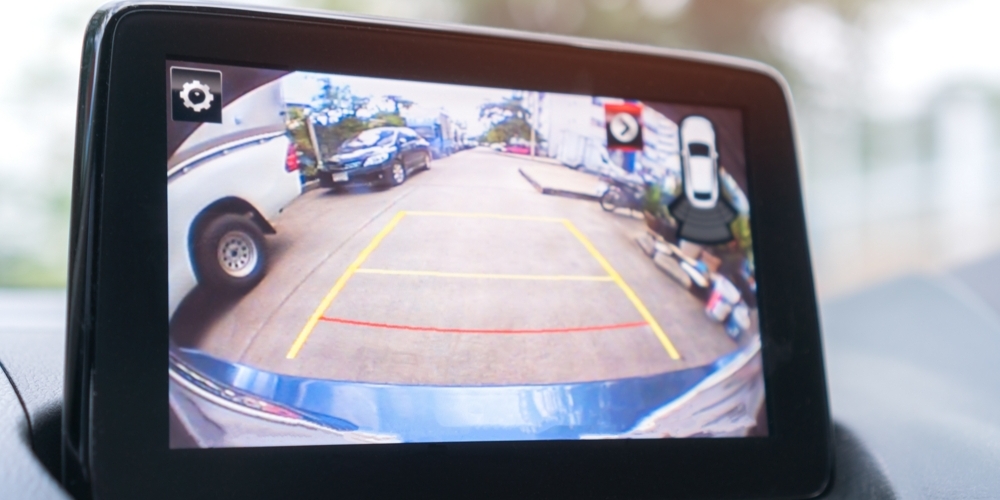
You will probably need to reverse every time you visit your local supermarket, take a trip to town, or move in and out of a driveway or garage.
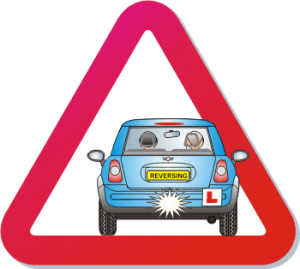 To ensure that you are ready for all these driving situations, your driving test examiner will ask you to complete some driving manoeuvres, including reversing, for example, parking manoeuvres.
To ensure that you are ready for all these driving situations, your driving test examiner will ask you to complete some driving manoeuvres, including reversing, for example, parking manoeuvres.
The first step towards learning the test manoeuvres is reversing in a straight line.
To practise reversing, you must find a safe, legal and convenient place. Your instructor will make sure that the location is suitable. Choosing a safe place to manoeuvre will reduce your risk of having a crash. With your instructor present, it's unlikely that you will have an accident, but you will be doing slow-speed manoeuvres after you pass your driving test; for example, you might want to turn around after making a wrong turn.
This lesson will develop your basic reversing skills so that you can tackle the slightly more complex exercises later on, confident in the knowledge that you can already reverse safely and correctly.
This video is provided courtesy of Driving Test Success For well over 100 learning to drive videos visit Driving test Success. (Google Play | App Store - appstore practical videos available as an in app purchase in the 4 in 1 kit)
During your driving test, straight reversing is included in the 'stop on the right' manoeuvre. In addition, the skills learnt in this section are relevant to bay parking and parallel parking, which are also included in driving tests.
The examiner will watch to ensure that you do not endanger other road users. This means that you must be fully aware of what is happening around your car and be prepared to wait and give way to others if necessary.
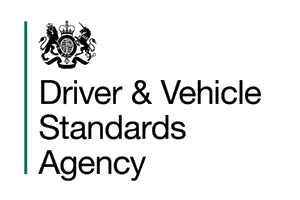
Things the examiner will consider:
Effective observation
Correct use of controls
Reasonable accuracy
Correct positioning before and after the turn
You can use cars fitted with reversing sensors or cameras on your test. However, never rely on a reversing camera alone on your test or after you have passed. Always look around. Reversing cameras are beneficial, but just like your mirrors, they don't show everything that might affect safe reversing. The examiner would not consider total reliance on a camera as safe observation, even if the road/space behind is clear.
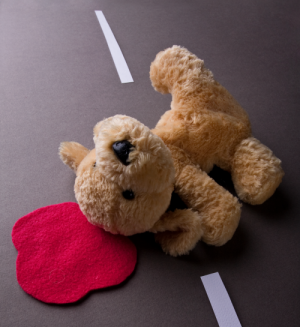
It's easy to let your concentration and observation slip when doing slow-speed manoeuvres (once you have mastered the skills). A look around any multi-storey car park will show paint left behind on walls and pillars!
Scraping your car in a multi-storey car park is one thing - failing to see a child behind is another thing entirely.
In addition to all of the information in this lesson, there is an important rule:
If you are not 100% certain that the area immediately behind your car is clear, you MUST get out to check. In a worst-case scenario, there could be a child or much-loved family pet, or it might just be a bag of shopping you forgot to load.
Any doubt at all - get out and check.
When reversing in a straight line, it's usually best to look back over your left shoulder. This will give you a good view behind, and you can easily glance to the front.
If you use a reverse camera or mirrors while reversing, have quick glances. Mirrors and cameras do not give you the 'big picture' needed to reverse safely.
To look back along the road, you will need to turn around slightly in your seat. You might have to turn around quite a long way to see enough if you wear glasses.
In manual cars, some drivers have to move the seat forwards slightly to reach the clutch when turning around; if you need to do this, remember to readjust the seat after you've finished reversing.
You can (legally) remove your seatbelt when completing any manoeuvre, which includes reversing. Having said this, the flexibility provided by most seatbelts will allow you to turn around without unfastening them. If you release your seatbelt, remember to put it on again before driving off.
The easiest way to control the steering when reversing in a straight line is to hold the wheel in the 12 o'clock position with your right hand. You can put your left hand near the bottom of the wheel, or you might want to rest your left arm on the back of the passenger seat to make it easier to look behind.
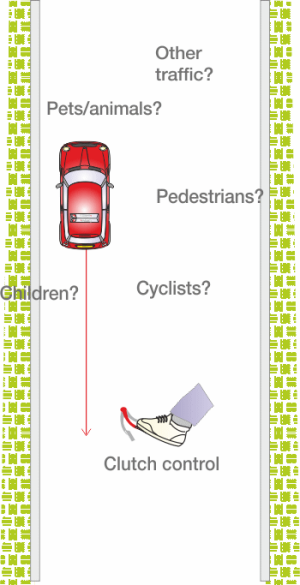
All manoeuvres need proper observation, control and accuracy.
These are the key points marked by your driving test examiner - for a good reason. If you get these three things right and make good decisions, you will remain safe whenever you are reversing. Get these things wrong, and you will face hefty car insurance premiums!
Observation: Keep a look out for others on the road. When reversing, you are the 'odd one out' and must be ready to give way if necessary.
Control - Manual: The best way to control your car during slow-speed manoeuvres in a manual car is 'clutch control' in reverse gear - keeping the clutch at or around the 'biting point'. To slow down, squeeze the clutch down a bit. To move again, ease the clutch up a little.
Control - Automatic: Move the gear selector to 'R' (Reverse). It's then probably safest to use one foot - your right foot - to control the brake and accelerator. In most automatic cars, the 'creep' (slow movement without acceleration) will be fast enough to reverse - the only exception being if you are doing a high-speed reverse to escape the police! When 'creep' is fast enough, using the footbrake alone will be enough to control the car.
Some drivers use two feet to reverse - with the left foot operating the brake pedal. This is acceptable driving, but you must be extremely careful and well-practised. The car could lurch back at high speed if you release the brake while pressing the gas pedal.
Control - Electric: In an electric car, you simply select reverse with a switch - this makes the car's motor(s) run in reverse - then control the vehicle with the power pedal (accelerator/e-pedal)) with gentle pressure to move and release the pedal to stop. Some drivers also 'cover' the brake with their left foot for added peace of mind. SAome electric cars have a 'creep' setting for slow speed manoeuvring – see the car manual for advice about using this.
Accuracy: You need a little more time for accurate steering when reversing because the car steers a little bit differently in reverse - this is why moving very slowly is essential.
You won't feel the steering effect immediately when you turn the wheel because the car pivots around the rear wheels. This causes some new drivers to turn the wheel too much when learning to reverse - but this is just part of the learning process.
The key to keeping the car straight when reversing is the same as when driving forwards - look well along the road and not down at the kerb. Of course, in this case, you will be looking along the road through the rear screen.
After practising this manoeuvre a few times, you should be able to reverse in a straight line keeping the car at a steady distance of about half a metre from the kerb.

We have already said that it's best to look over your left shoulder when reversing in a straight line, but that's not the only place you need to look - you need to be aware of other traffic and all other road users.
When doing the manoeuvres such as reversing in a straight line, you are the 'odd one out' - you must be prepared to give way if another vehicle, cyclist or pedestrian approaches.
To see what's happening all around the car when reversing, it's useful to have a 'neck like an OWL'.
Did you know that the letters 'O-W-L' stands for 'Observation Without Limits'?
Most owls can swivel their heads almost all the way around - they also have large eyes and are reputed to be very wise. This means that they are aware of what's happening around them and also realise the dangers - this keeps them safe in a potentially dangerous environment.
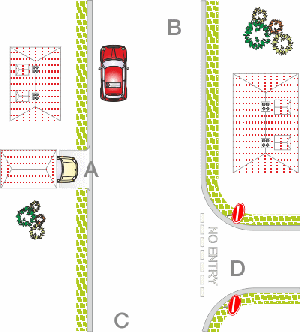
The diagram shows the areas that you need to check when reversing.
A & D: Look out for pedestrians and vehicles emerging from driveways and junctions.
B: Look to the front for vehicles and cyclists that might be approaching
C: Look well back to steer a straight and accurate course and watch for other road users.
It is a good idea to pause occasionally when you are reversing - this makes it easier to look around and keep the car under control at the same time.
It is a good idea to pause occasionally when reversing - this makes it easier to look around and simultaneously keep the car under control.
As mentioned earlier, you can use your rear-view mirrors to help with your observation when reversing, but never rely on mirrors alone. Your mirrors will not show you as much as you can see when you turn around. Even in large vans and trucks, where mirrors are the rimary tool for reversing observation, the driver will still need to look to the front and sides for safety.

Click here to complete the quiz for this lesson
(The page will open in a new window/tab)
You will find references for the answers in this lesson.
You can check your answers as you go along, or complete the full quiz before checking.
Leaving the check to the end is a good way to test yourself.
When you check or review your answers you will get a brief explanation of the answer.
Good Luck!